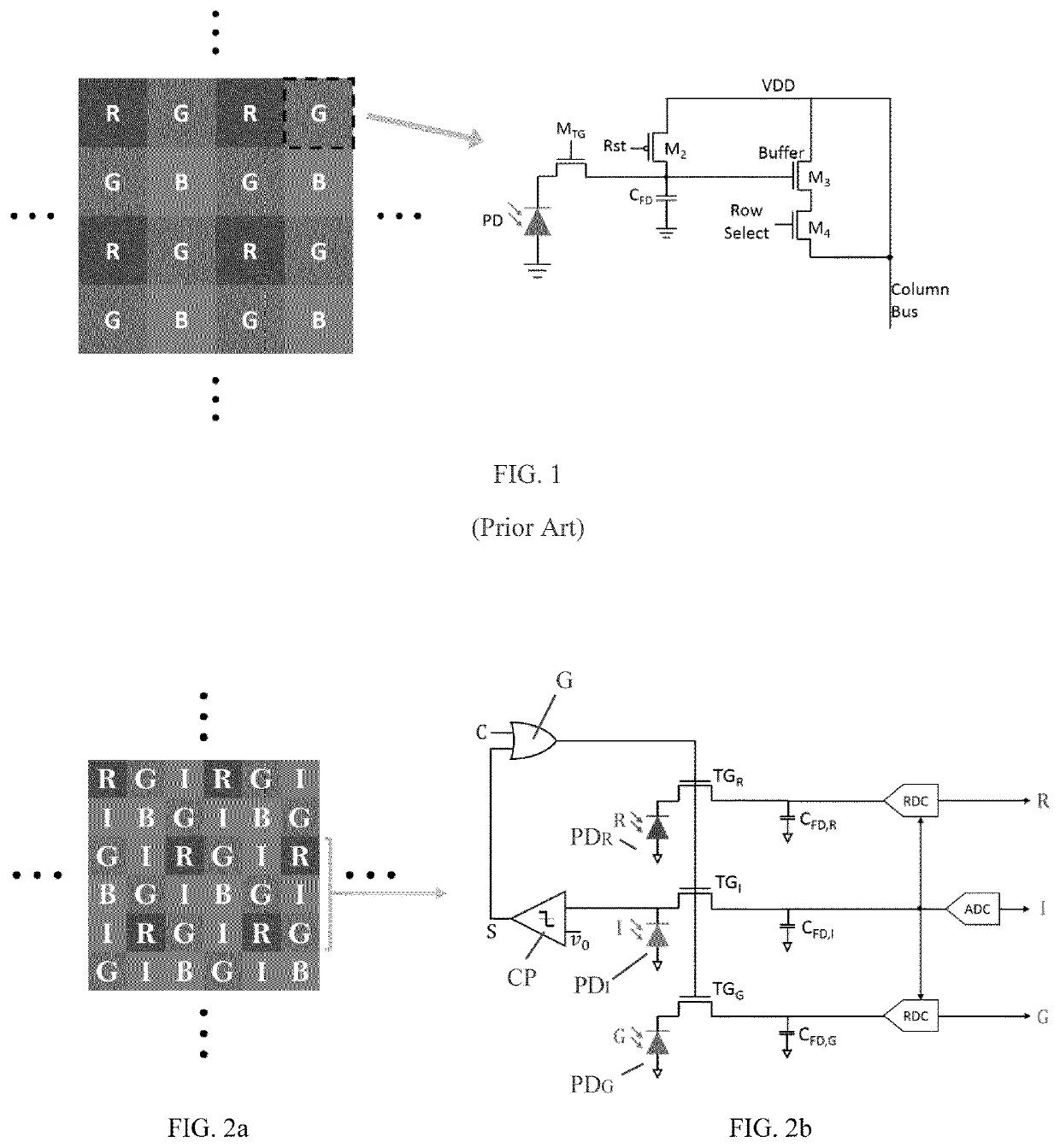Intensity-Normalized Image Sensor
a technology of intensity-normalized image and sensor, which is applied in the field of intensity-normalized image sensor, can solve the problems of large dynamic range that the sensor is called upon to handle, deleterious secondary effects, and inability to provide the necessary dynamic range for capturing images in low light conditions
- Summary
- Abstract
- Description
- Claims
- Application Information
AI Technical Summary
Benefits of technology
Problems solved by technology
Method used
Image
Examples
Embodiment Construction
[0012]For the purposes of promoting an understanding of the principles of the disclosure, reference will now be made to the embodiments illustrated in the drawings and described in the following written specification. It is understood that no limitation to the scope of the disclosure is thereby intended. It is further understood that the present disclosure includes any alterations and modifications to the illustrated embodiments and includes further applications of the principles disclosed herein as would normally occur to one skilled in the art to which this disclosure pertains.
[0013]The present disclosure provides a different approach to address the problems of the prior art image sensors discussed above. In most cases when there is a bright pixel, it is not necessarily useful to know the precise brightness of the pixel. Instead, it is useful to identify it as a bright pixel and to measure the RGB content of the light reaching that pixel. In particular, the sensors and methods des...
PUM
 Login to View More
Login to View More Abstract
Description
Claims
Application Information
 Login to View More
Login to View More - R&D
- Intellectual Property
- Life Sciences
- Materials
- Tech Scout
- Unparalleled Data Quality
- Higher Quality Content
- 60% Fewer Hallucinations
Browse by: Latest US Patents, China's latest patents, Technical Efficacy Thesaurus, Application Domain, Technology Topic, Popular Technical Reports.
© 2025 PatSnap. All rights reserved.Legal|Privacy policy|Modern Slavery Act Transparency Statement|Sitemap|About US| Contact US: help@patsnap.com

